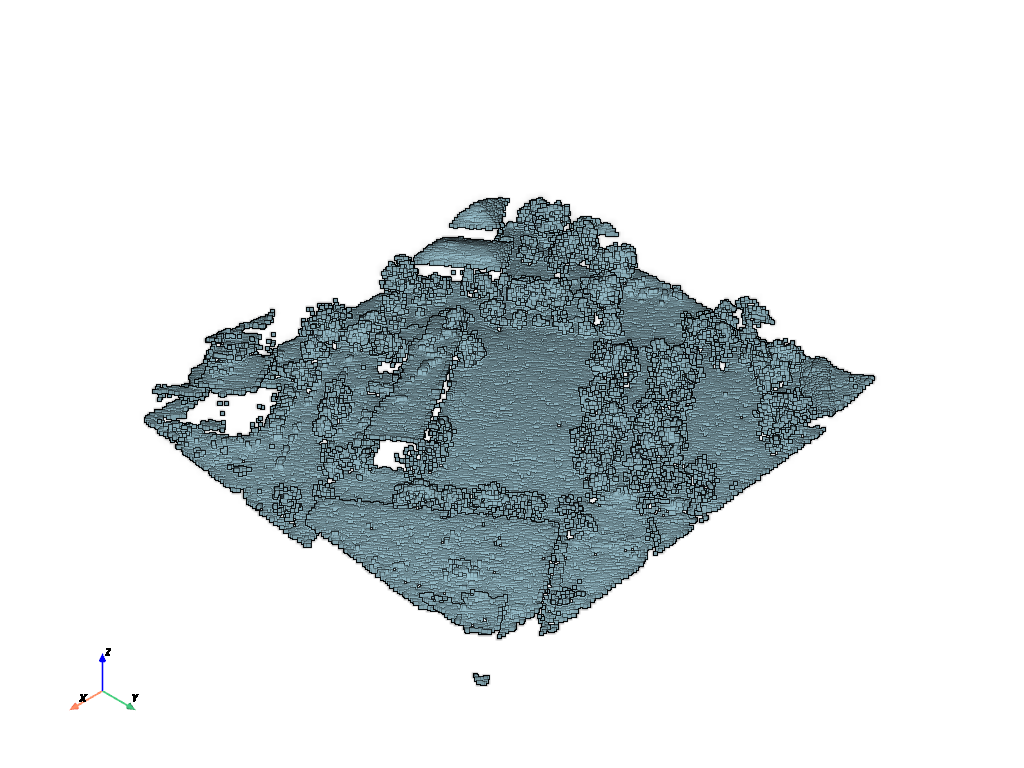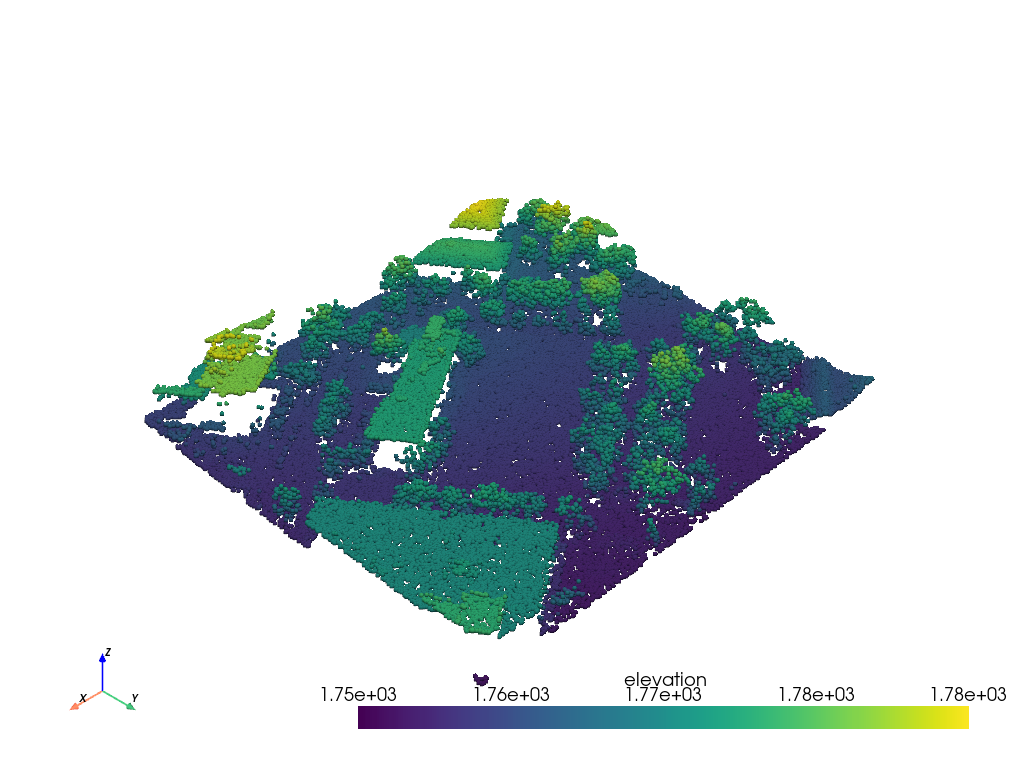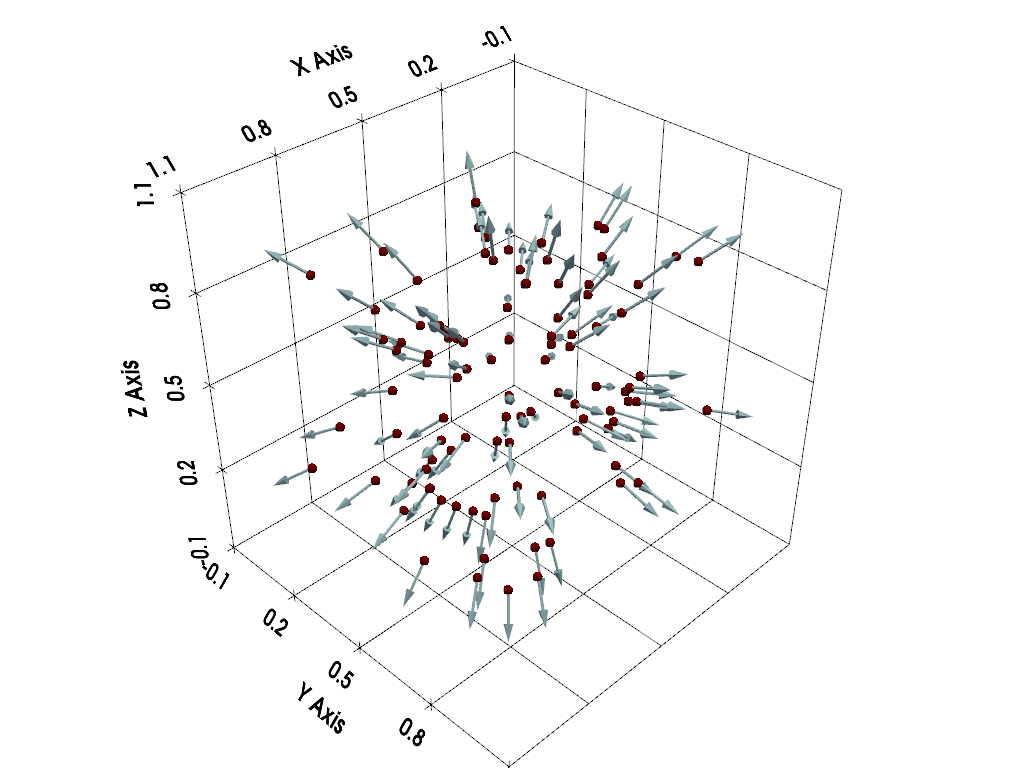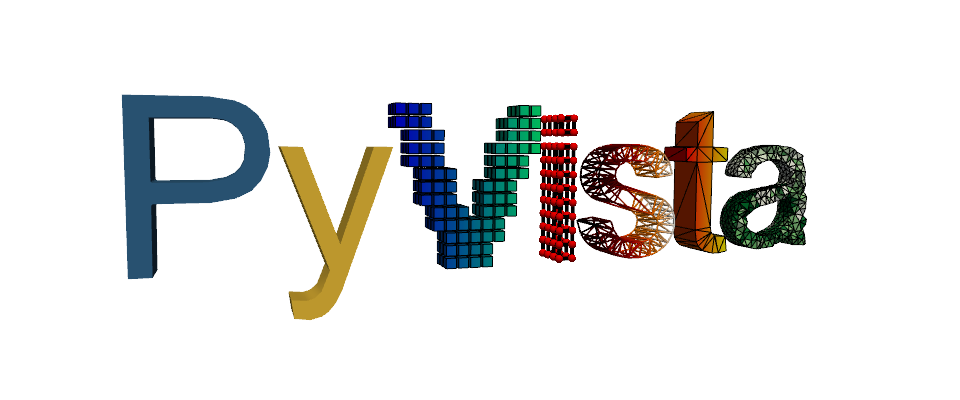Note
Go to the end to download the full example code. or to run this example in your browser via Binder
Create Point Cloud#
Create a pyvista.PolyData object from a point cloud of vertices and
scalar arrays for those points.
import numpy as np
import pyvista as pv
from pyvista import examples
Point clouds are generally constructed using pyvista.PolyData and
can easily have scalar or vector data arrays associated with the individual
points. In this example, we’ll start by working backwards using a point cloud
that is available from our examples module. This however is no
different than creating a PyVista mesh with your own NumPy arrays of vertice
locations.
# Define some helpers - ignore these and use your own data if you like!
def generate_points(subset=0.02):
"""A helper to make a 3D NumPy array of points (n_points by 3)."""
dataset = examples.download_lidar()
ids = np.random.randint(low=0, high=dataset.n_points - 1, size=int(dataset.n_points * subset))
return dataset.points[ids]
points = generate_points()
# Output the first 5 rows to prove it's a numpy array (n_points by 3)
# Columns are (X, Y, Z)
points[0:5, :]
pyvista_ndarray([[4.80961075e+05, 4.40019850e+06, 1.75918005e+03],
[4.80934975e+05, 4.40015550e+06, 1.76218005e+03],
[4.81027675e+05, 4.40014170e+06, 1.76138000e+03],
[4.81074975e+05, 4.40009450e+06, 1.76806995e+03],
[4.81095175e+05, 4.40023240e+06, 1.76946997e+03]])
Now that you have a NumPy array of points/vertices either from our sample data or your own project, create a PyVista mesh using those points.
Now, perform a sanity check to show that the points have been loaded correctly.
True
Now that we have a PyVista mesh, we can plot it. Note that we add an option to use eye dome lighting - this is a shading technique to improve depth perception with point clouds (learn more about EDL).
point_cloud.plot(eye_dome_lighting=True)

Now what if you have data attributes (scalar or vector arrays) that you’d
like to associate with every point of your mesh? You can easily add NumPy
data arrays that have a length equal to the number of points in the mesh
along the first axis. For example, lets add a few arrays to this new
point_cloud mesh.
Make an array of scalar values with the same length as the points array. Each element in this array will correspond to points at the same index:
Note
You can use a component of the points array or use the n_points
property of the mesh to make an array of that length.
Add that data to the mesh with the name “elevation”.
point_cloud["elevation"] = data
And now we can plot the point cloud with that elevation data. PyVista is
smart enough to plot the scalar array you added by default. This time, let’s
render every point as its own sphere using render_points_as_spheres.
point_cloud.plot(render_points_as_spheres=True)

That data is kind of boring, right? You can also add data arrays with more than one scalar value - perhaps a vector with three elements? Let’s make a little function that will compute vectors for every point in the point cloud and add those vectors to the mesh.
This time, we’re going to create a totally new, random point cloud containing
100 points using numpy.random.random().
# Create a random point cloud with Cartesian coordinates
points = np.random.rand(100, 3)
# Construct PolyData from those points
point_cloud = pv.PolyData(points)
def compute_vectors(mesh):
"""Create normalized vectors pointing outward from the center of the cloud."""
origin = mesh.center
vectors = mesh.points - origin
return vectors / np.linalg.norm(vectors, axis=1)[:, None]
vectors = compute_vectors(point_cloud)
vectors[0:5, :]
pyvista_ndarray([[ 0.69411816, 0.71958471, -0.01994551],
[ 0.79910723, -0.34150506, 0.49477462],
[-0.22539622, 0.9023273 , 0.36742616],
[ 0.54911722, -0.37096337, 0.7489035 ],
[-0.29080421, -0.32947907, -0.89826302]])
Add the vector array as point data to the new mesh:
point_cloud["vectors"] = vectors
Now we can make arrows using those vectors using the glyph filter (see the Glyph Example for more details).
arrows = point_cloud.glyph(
orient="vectors",
scale=False,
factor=0.15,
)
# Display the arrows
plotter = pv.Plotter()
plotter.add_mesh(point_cloud, color="maroon", point_size=10.0, render_points_as_spheres=True)
plotter.add_mesh(arrows, color="lightblue")
# plotter.add_point_labels([point_cloud.center,], ['Center',],
# point_color='yellow', point_size=20)
plotter.show_grid()
plotter.show()

Total running time of the script: (0 minutes 5.783 seconds)
